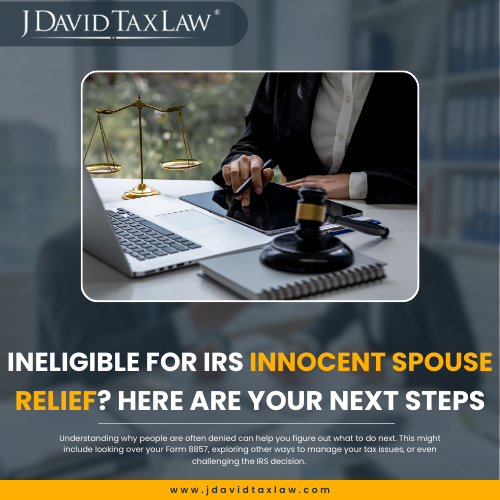How Much Does The IRS Usually Settle For? Learn What To Expect
The IRS often settles tax debts for far less than the full amount owed , in rare cases as little as 5% to 20% of the total balance when Reasonable Collection Potential (RCP) is very low.
If you’re struggling with back taxes, the IRS Offer in Compromise (OIC) program may be your path to relief. But qualifying isn’t automatic, and understanding how the IRS decides what to accept is key to settling your debt successfully. This article breaks down how the process works, what percentage you might expect to pay, and what to do next if you’re ready to pursue a settlement.
What Does It Mean to Settle with the IRS?
Settling with the IRS means reaching an agreement to pay less than the full amount of tax debt you owe. The most common way to do this is through a program called an Offer in Compromise (OIC).
With an Offer in Compromise, the IRS reviews your financial situation, including income, expenses, assets, and potential future earnings to determine if you genuinely can’t afford to pay the full debt. If they agree, they may accept a lower amount as a full and final settlement.
It’s not a loophole or quick fix. The IRS only approves offers from taxpayers who meet strict eligibility criteria and submit complete, accurate financial documentation . Many people apply, but not everyone qualifies.
If you’re struggling with back taxes and want to know whether you qualify, a tax attorney can help you evaluate your chances and avoid wasting time on an offer the IRS is unlikely to accept.
The IRS is Forgiving Millions Each Day. You Could Be Next.
The IRS Settlement Formula: How They Calculate Your Offer
The IRS doesn’t guess when deciding how much they’ll settle for. Instead, they use a formula based on your Reasonable Collection Potential (RCP). The RCP is the IRS’s estimate of how much they can realistically collect from you, now and in the future.
Here’s what goes into that formula:
Net Realizable Value of Assets: What your assets (like cars, savings, property) are worth after accounting for quick-sale discounts and outstanding loans.
Future Monthly Income: The IRS estimates your disposable monthly income and multiplies it by 12 to 24 months, depending on your proposed payment terms.
IRS Formula:
RCP = Asset Equity + Disposable Monthly Income (× 12 or 24 months)
The IRS generally won’t accept an offer lower than your RCP. That means even if you owe $50,000 in taxes, but your RCP is only $3,200, you may be able to settle for something close to that amount.
But if your assets or income suggest you could pay more — either all at once or over time — the IRS is unlikely to approve a low offer.
Getting the numbers right is critical. Mistakes or overstatements can cause delays or rejections, which is why many taxpayers choose to work with a tax attorney to prepare their offer accurately.
What Percentage of Tax Debt Does the IRS Settle For?
The IRS doesn’t settle based on a fixed percentage. There’s no set rule that says they’ll accept 10%, 20%, or even 50% of what you owe. What they accept depends entirely on your ability to pay, not on how much you owe.
That said, many taxpayers end up settling for significantly less than their full balance if their financial situation justifies it. The IRS Offer in Compromise program is designed to accept settlements only when it’s clear you can’t pay the full amount, now or over time.
Real-World Example:
One J. David Tax Law client owed over $1.2 million in tax debt. The IRS initially rejected their settlement offer, saying the client could pay more. But after a successful appeal by our legal team, the IRS accepted an offer of just $60,300, more than 95% less than the total liability.
This kind of outcome isn’t guaranteed. But it shows what’s possible when your offer is based on solid financial documentation and strategic negotiation.
How to Qualify for an IRS Settlement
To qualify for an IRS settlement through the Offer in Compromise (OIC) program, you must prove that paying your full tax debt would cause significant financial hardship. The IRS will carefully evaluate your entire financial picture to decide whether your offer reflects the most they can reasonably expect to collect.
Here’s what matters most in determining eligibility:
Income vs. Expenses
The IRS will compare your monthly income to your allowable living expenses. If your income barely covers essential needs like housing, food, and healthcare, this can weigh in your favor.
Personal Assets and Equity
Equity in assets such as your home, vehicle, bank accounts, retirement accounts, and investment property will be factored in. The IRS uses the net realizable value, not necessarily what you paid for the asset, when calculating how much you could reasonably contribute.
Filing and Payment Compliance
To be considered, you must be current on all required tax filings. You also can’t be in an open bankruptcy proceeding. If you’re missing returns or haven’t made required estimated payments, your offer will be rejected automatically.
No Recent Bankruptcy
If you’ve filed for bankruptcy recently or are currently in an active case, you are not eligible for an OIC. The IRS will defer collection activities through the bankruptcy process instead.
If you meet these criteria, you may have a good chance of qualifying for a settlement, especially with help from experienced tax professionals who can structure your financial disclosures strategically.
When the IRS Won’t Settle — Common Disqualifiers
Not every taxpayer is eligible for a settlement. The IRS Offer in Compromise (OIC) program has strict guidelines, and even one disqualifying factor can cause your offer to be rejected automatically or denied upon review.
IRS Settlement Options Beyond Offer in Compromise
While the Offer in Compromise (OIC) is the most well-known IRS settlement tool, it’s not the only option available. Depending on your financial situation, other IRS relief programs may provide a meaningful resolution without requiring a lump-sum offer.
Partial Payment Installment Agreement (PPIA)
If you can’t afford to pay your full tax debt but don’t qualify for an OIC, the IRS may approve a Partial Payment Installment Agreement. This allows you to make affordable monthly payments, often for less than the total amount owed, until the IRS’s statute of limitations on collection expires. If the 10-year collection period expires while you’re on a Partial Payment Installment Agreement, the remaining balance may no longer be legally collectible.
This option is best suited for taxpayers who have some disposable income but limited assets.
Currently Not Collectible (CNC) Status
If paying your IRS debt would cause significant financial hardship, such as making it impossible to cover basic living expenses, you may be placed in Currently Not Collectible status. This pauses all collection actions, including wage garnishments and bank levies, though interest and penalties continue to accrue.
While it doesn’t eliminate the debt, CNC can give you time to stabilize your finances or pursue longer-term relief.
Penalty Abatement
Penalties can make IRS debt significantly more expensive. If your balance is inflated due to late-filing or late-payment penalties, you may qualify for relief through:
First-Time Penalty Abatement, if you have a clean compliance history, or
Reasonable Cause Relief, if you can show that unforeseen circumstances, like illness, natural disaster, or financial hardship, led to your tax issue.
Though the IRS rarely waives interest, reducing penalties can still lower your overall balance and make a payment plan more manageable. J. David Tax Law specializes in helping delinquent taxpayers qualify for penalty abatement relief.
Get the Best IRS Settlement Outcome With Tax Law Experts
Settling with the IRS isn’t about what you owe, but what you can prove you can pay.
Some taxpayers settle for pennies on the dollar, while others get denied for overlooking key requirements. The difference often comes down to strategy, documentation, and expert representation.
J. David Tax Law can review your situation and help you determine what the IRS is likely to accept before you submit a shoddy or unfavorable offer.





















